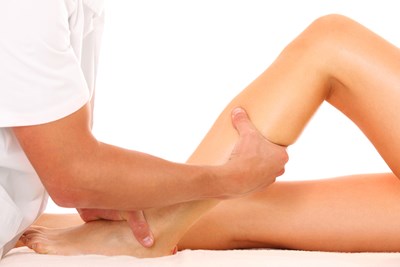The tibia is the larger of the two bones that make up the portion of your legs between the knees and the ankles. When the front portion of this bone gets inflamed and overworked, it begins to ache fiercely, in a condition known as a shin splint. The exact cause isn’t always determinable, but there are several methods of diagnosis, treatment, and prevention.
Types of Shin Splints
There is some disagreement over whether "shin splint" is a more common term for a single issue or a blanket term for a handful of lower leg injuries. Some experts maintain that shin splints are medial tibial stress syndrome (MTSS) and often mistaken for a problem that is actually tibial stress fracture (TSF) or anterior tibialis tendonitis. Others refer to all three as possible “causes” of shin splints.
Regardless, these three are among the most common lower leg injuries in athletes. MTSS is the most prevalent, especially in fledgling athletes, as it usually occurs from overuse or trying to do too much without the proper strength preparation. It may be present in one or both legs, and the pain is felt along the whole, inner length of the shin.
With TSF, on the other hand, the pain is located in a specific spot, mostly just when you put weight on it. Anterior tibialis tendonitis causes pain on the outside, instead of the inside like MTSS. Strain and repetition of the anterior tibialis muscle inflames the tendon of the same name.
Causes of Shin Splints
All kinds of things can cause shin splints, whether you categorize them as MTSS only or as a variety of tibial injuries. Having imperfect leg or foot structure can initiate the pain. Arches that are too high or too low can lead to shin splints, as can having knees that aren’t in exactly the right place. Inflexibility and the destabilizing effect of weak hips or core muscles are other anatomical culprit, although these can be remedied through proper training. Poor diet or underlying issues such as bone density problems and hormonal imbalances can affect the strength of the supporting muscles, leaving them less able to provide the needed stabilization and structure.
Beginning athletes often push themselves to do more than their bodies are ready for. Runners especially are prone to shin splints. Even athletes for whom workouts are old hat can run into difficulty when they change up their routine. Environment can have a big impact as well; uneven terrain and hard surfaces like concrete can be unforgiving for any athlete. Not paying attention to proper bodily placement and form can cause unnecessary muscle strain, leading to the inflammatory discomfort of shin splints. Perhaps the most preventable of causes is poor choice of footwear. Shoes that are worn out or not made for the activity don’t provide the necessary support and cushioning.
Treatment and Prevention of Shin Splints
The most important aspect to promote shin splint healing is to decrease activity for at least a week. Continued overuse will only aggravate the issue. It is not necessary to cease exercise completely, but experts recommend switching to activities with less impact on the feet and legs; things like swimming or cycling can keep you active without making your shin splints worse.
To help alleviate symptoms, ice and an anti-inflammatory medication can help at home. Try using an ice pack in twenty minute increments every three to six hours for a few days, combined with naproxen, ibuprofen, or a similar medication. Exercises to stretch and strengthen the affected muscles will not only provide relief but help prevent future occurrences.
Once you become active again, pay attention to your workout regimen. Work up to more extreme exercises slowly, and make sure to use proper form. If the shin splints were caused by abnormally formed arches, shoe inserts may be helpful. Over the counter insoles are effective for some people, but there are also more customizable options available with a prescription from your doctor. Most importantly, make sure your shoes are in good shape, of good quality, and made for what you’re using them for.



